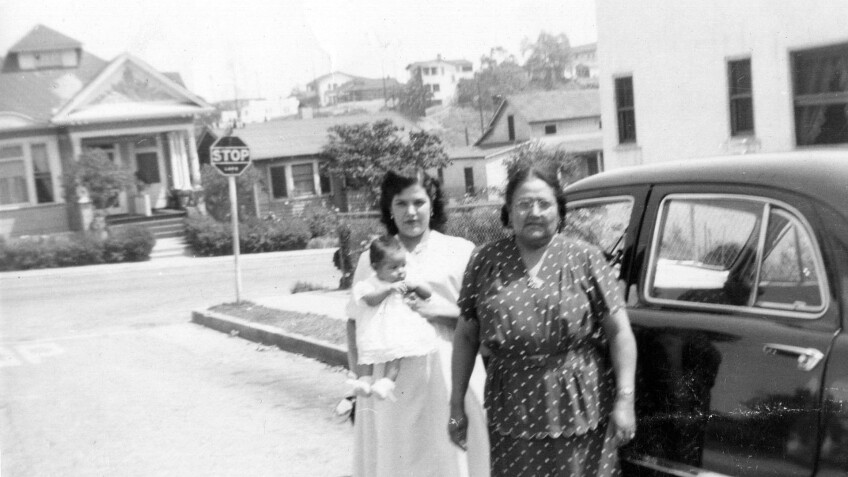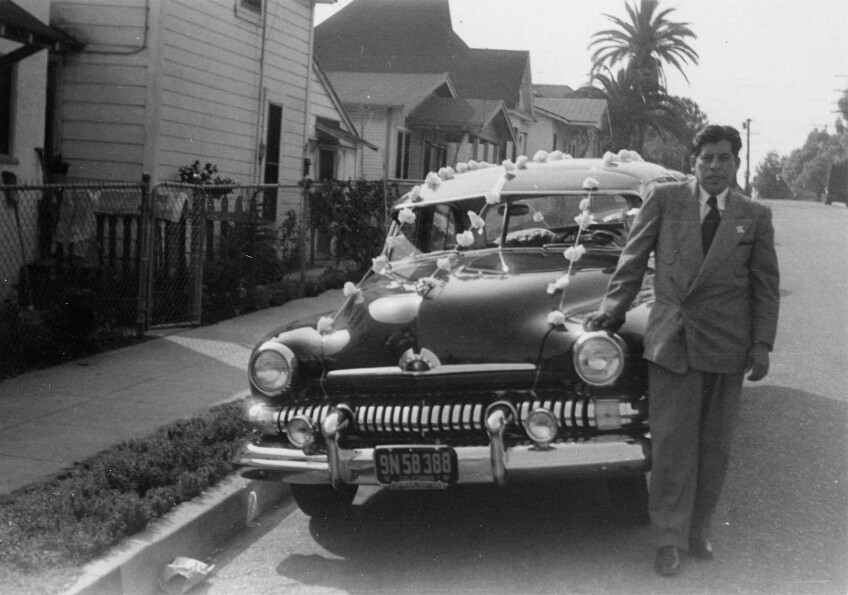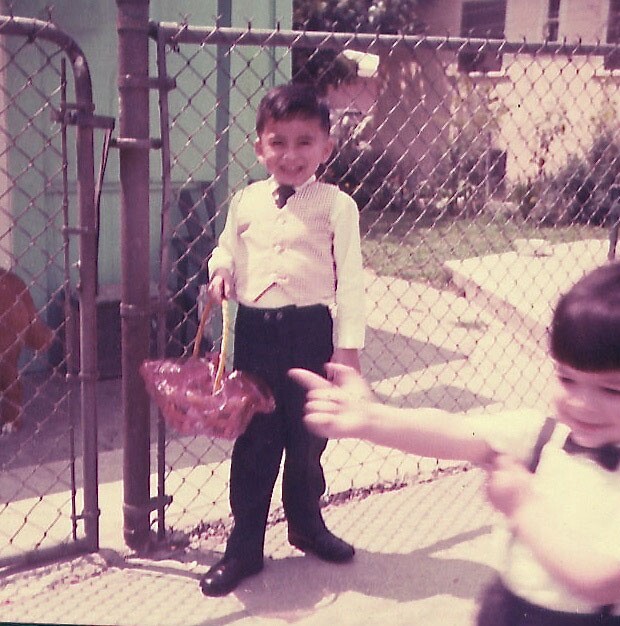A Place Erased: Family, Latino Urbanism, and Displacement on L.A.'s Eastside

As someone who grew up on Los Angeles’ Eastside, displacement has always been part of my life. Displacement sometimes occurs on a massive, industrial scale, as it did in the 1950s and ‘60s with the construction of the freeways, claiming the homes of my relatives.
It also happens on a smaller scale, as in the 1970s when Theodore Roosevelt High School expanded and physically – though not mentally – erased our family compound.

For three decades, my extended family lived on a corner lot in Boyle Heights where Lanfranco Street and Mott Street formed a T-shaped intersection. Our Recendez family compound – my grandmother’s two-story house, with its steeply gabled Victorian roof, flanked by two smaller homes, all sharing the same lot – occupied the southwest corner. Across the street, on the northwest corner, was Roosevelt High.
My family purchased these houses with the money a relative had sent home while stationed overseas in World War II. It was a move up for my grandmother and her three children, who had previously lived in a Bunker Hill tenement. Over time, five more children were born and raised here. Eventually I came onto the scene, and as a young child this place made a strong impression on me.
Our family compound looked and functioned like those of most East Los Angeles neighborhoods, where extended family members supported each other, forming tightly knit, multi-generational, Mexican-American micro-communities.
Our family compound looked and functioned like those of most East Los Angeles neighborhoods, where relatives supported each other, forming tightly knit, multi-generational, Mexican-American micro-communities. Extended family members who didn’t share our corner compound nevertheless lived nearby, in other homes adjacent to the intersection and on 6th Street’s Blueberry Hill.
I hold many cherished memories of our family’s street corner. There were the the broken, disfigured household figurines I dug up from my beneath my grandmother’s marigolds. There was the incredible concrete shrine, inlaid with shells and tiles, that someone in the family had built in the form of an Aztec pyramid. There was the kitchen table where my grandmother proudly hovered as I learned to eat beans with only a tortilla, Mexican style.
But what made our family compound unique was the configuration of the houses on the corner lot. In a traditional lot the narrow side faces the street, but in ours the long side did. This created a large side yard fronting the sidewalk, half paved in concrete, the rest covered in thick St. Augustine grass. In the center was a big tree where my family hung hammocks or piñatas.
This side yard became the center of our family life – a multi-generational and multi-cultural plaza, seemingly always abuzz with celebrations and birthday parties. Here the Mexican elders shared space with their American-born descendants.

My father had seven siblings and they collectively had twenty plus children. Every weekend, and on holidays and special occasions, our extended family would walk or drive from as far away as Montebello to my grandmother’s house.
Unlike the somber living room where the adults would vie for a seat, for us children her yard – as well as the adjacent sidewalk, street, and the well-tended lawn on the side of the high school – became our impromptu playground. There we played catch and games like hide-and-seek. We roamed freely, laughing, screaming, and yelling with our many cousins.

On weekends, the older, Mexican men gathered in the yard to play poker on a small table under the tree. They were serious card players and worse stern looks on their faces, telling us that they could not be disturbed.
The Mexican great-aunts were also a strong part of this visual landscape. They hovered over their yards, taking care of their plants and going about their business as if we were not there. These women were heavy-set with dark complexions and wore housedresses with aprons. They kept their gray hair short like a man’s. They never wore make-up or succumbed to American fashion trends but all wore their small, round gold Mexican earrings. They smiled occasionally if our eyes caught each other, but because of the language and cultural differences we seldom spoke. In my mind this was how I pictured Mexico, which we rarely visited apart from our shopping daytrips to Tijuana.
In between the Mexican elders and us children was another generation of aunts and uncles who were entering adulthood and, unlike the generation of their parents, embraced the mainstream culture of 1960s America.
On holidays, birthdays, and special occasions the side-yard plaza was transformed into festival of current American music, fashion, and political events. Women in wigs and mini-shirts and men in tight-fitting pants and dress shirts listened to the Beatles and discussed the heady events of the time: the Vietnam War, Kennedy, the Chicano movement.
One small space somehow accommodated both the sternness and austereness of old Mexico and modern American culture.
Our family compound abruptly disappeared from our lives. It was like an unexpected family death, except there was no funeral, eulogy, or reflection on how this place had shaped us.
Suddenly, though, it all disappeared. To expand its sports fields, Roosevelt High School tore down the whole block. Our family compound abruptly disappeared from our lives. It was like an unexpected family death, except there was no funeral, eulogy, or reflection on how this place had shaped us.
With a collective sadness, my extended family dispersed. Many moved further east to new homes and communities, trying to reinvent what had been lost. My grandmother’s new home in Montebello was a small Spanish colonial revival house on a conventional suburban lot with a small front yard and large back yard. Whenever the extended family gathered here, it felt crowded and awkward. Gone was the side yard that brought us all together and, facing the street, kept us abreast with the outside world.
My Mexican elders did not speak to us much, but my understanding of how urban landscapes function is a product of the visual and spatial landscape they created on that corner lot.
The site of our now-mythical family place now lies beneath the turf of Roosevelt High School’s athletic field. A beautiful mural of Mexican history adorns the concrete wall on Mott Street. No reference points to my life survive there, but this place nevertheless lives on in my memory – and through my life’s work.
My Mexican elders did not speak to us much, but my understanding of how urban landscapes function – and indeed my efforts to popularize the concept of Latino Urbanism – is a product of the visual and spatial landscape they created on that corner lot.
I will always seek out what we lost: the social intimacy that placemaking makes possible.
Editor’s note: the photographs above and below appear courtesy of the author and his family, who have donated many images to local archival institutions, including the Los Angeles Public Library and Metro Transportation Library and Archive.



